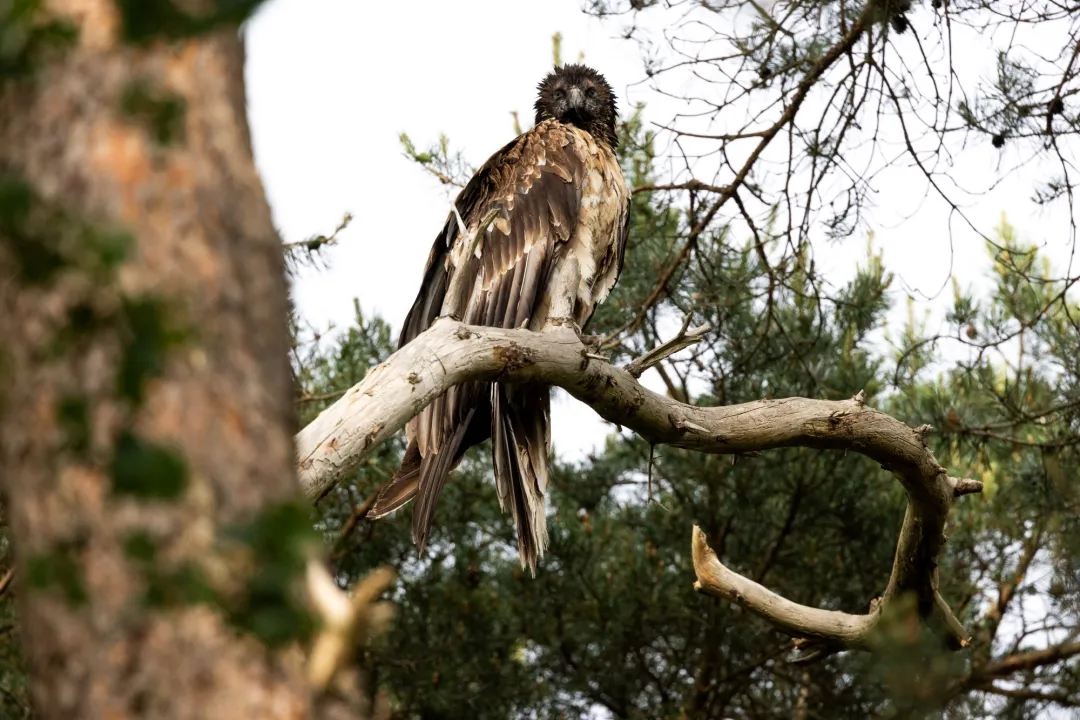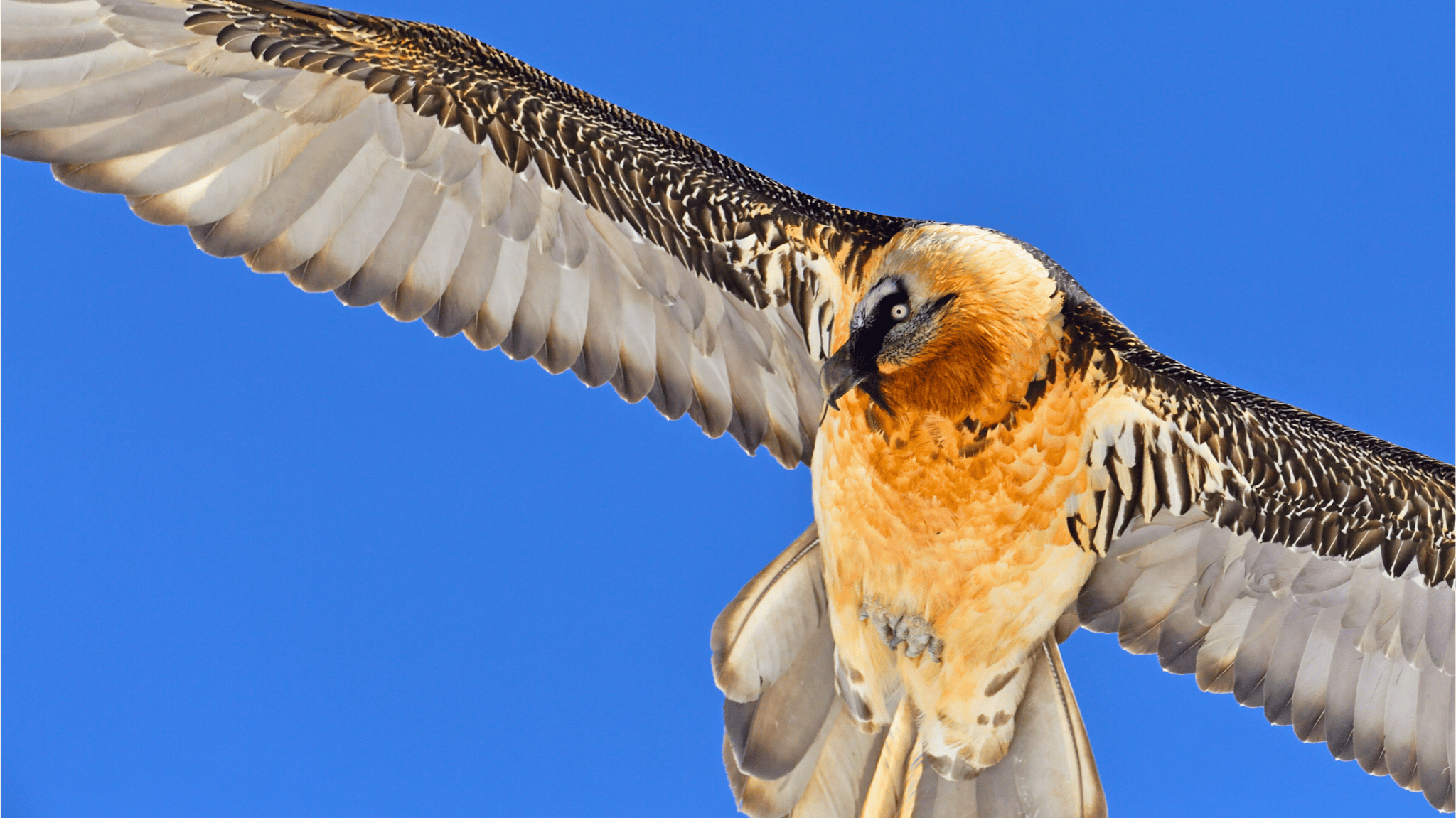
The Tinença de Benifassà natural park recently received three more captive-bred Bearded Vultures as part of our newest reintroduction project in Maestrazgo. The latest release brings the total of young Crebalòs, the local name of Bearded Vultures, freed into the wild to nine!
Hatching and rearing Bearded Vultures in captivity
The Bearded Vulture Captive Breeding Network, coordinated by us at the Vulture Conservation Foundation (VCF) on behalf of EAZA‘s EEP, breeds the species in captivity to support conservation actions, like this project. This year, for the first time, the Network assigned and provided three young captive-bred vultures to Maestrazgo compared to the usual two that we have been releasing annually since 2018.
Local schoolchildren have selected the names of the new inhabitants of the park: two of them, Durall (male) and Dena (female) came from the Bearded Vulture captive breeding centre of Guadalentín in Cazorla, managed by the VCF on behalf of the Junta de Andalucía, and both hatched on 4 March, currently weighing close to 5 kg, while the Delilah (female) from the Ostrava Zoo in the Czech Republic hatched on 8 March and weighs around 4.5 kg.
Releasing three Bearded Vultures in Maestrazgo
On 8 June 2021, it was time to release the birds. The regional Minister for Agriculture, Rural Development, Climate Emergency and Ecological Transition, Mireia Mollà, who was present at the ceremony, highlighted the “importance of this project for the improvement of biodiversity in the natural park and the great collaboration between different entities and administrations that make it possible”. She continued, “The arrival of these new Bearded Vultures consolidate the reintroduction project and contribute to growing the natural heritage of La Tinença and the Valencian Community.” After the ceremony, the team hiked to release the birds using the hacking method, which is more or less the natural way of fledging. At the site, two of the VCF’s staff captive breeding experts, Alex and Carmen, were also present to oversee the release and support the monitoring efforts.
Method of releasing Bearded Vultures
The hacking method involves releasing chicks that hatched in captivity at an artificial nest in suitable habitat to acclimatize to the natural environment for the coming weeks before they take their first flights. With this technique, the nestlings can associate the place where they are released with the area of hatching so that when they reach breeding age, which is around 8-10 years old, they select these places to breed. When Bearded Vultures are young, they tend to travel vast distances and explore new regions, but once they become sexually mature, they tend to select areas close to where they hatched to breed.
The VCF thanks everyone involved in making this possible. We hope the birds successfully take their first flights, and eventually settle and breed in the region!
Connecting populations of Bearded Vultures in Spain

The Maestrazgo region of Spain was historically a breeding site for Bearded Vultures and while there are no resident population the area is regularly visited by individuals released in Andalusia. The project to reintroduce the species to the region began in 2018 with the aim of establishing a wild breeding population that will bridge the populations in the Pyrenees and Andalusia, similar to the LIFE GYPCONNECT project in France that connects populations in the Pyrenees and the Alps. Over the course of the project captive-bred birds will be released in specially constructed hacking sites in the Parque Natural de la Tinença de Benifassà and in a unique experiment the team, in close consultation and collaboration with us here at the Vulture Conservation Foundation, will translocate adult non-breeding or floater birds from the population in the Pyrenees to the Maestrazgo region to test how effective this method is and if that has an effect on the reproductive productivity of the Pyrenean population. As part of the project the released birds will be monitored by fitting them with GPS transmitters to better understand how the move around the region and to encourage movements of birds to the region a series of supplementary feeding stations will be created.
The project is led by the Generalitat of Valencia, in collaboration with the Autonomous Communities from Aragón and Catalonia, the Spanish Ministry of Agriculture, Fish, Food and Environment and the us here at the Vulture Conservation Foundation.











